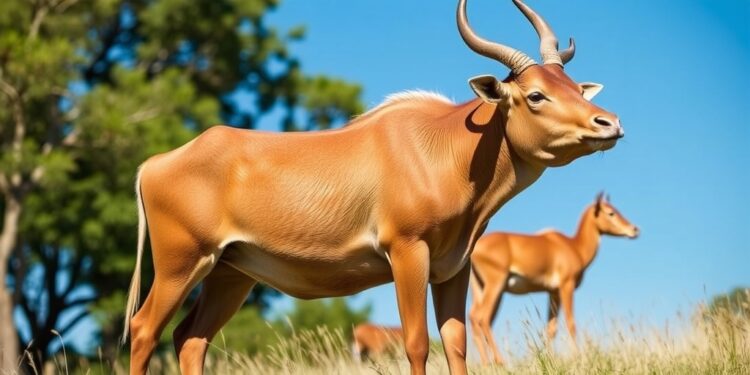
In a groundbreaking study that has just emerged from a collaborative effort between esteemed institutions, including the University of Reading, University College London, and The Johns Hopkins University School of Medicine, researchers are reshaping our understanding of cancer prevalence among animals of various sizes. For over four decades, a prevailing theory known as “Peto’s paradox” suggested no definitive correlation between an animal’s size and its risk of developing cancer. However, this new investigation, the most comprehensive of its kind so far, has upended that belief and revealed that larger animals, such as elephants and giraffes, experience significantly higher rates of cancer when compared to smaller species like mice, bats, and frogs.
The pressing implications of this study were delineated in the findings published in the reputable journal Proceedings of the National Academy of Sciences (PNAS). The researchers meticulously analyzed cancer data spanning 263 species that belong to four major taxonomic groups: amphibians, birds, mammals, and reptiles. Their comprehensive methodology demonstrated a consistent trend that contradicts previously accepted wisdom and reveals that larger species, without exception, exhibit a greater prevalence of both benign and malignant tumors.
Among the notable aspects of this study is how it examines the evolutionary strategies employed by species that have achieved larger sizes. It highlights that despite the increased cancer risk often associated with greater body size, some species—especially those that have rapidly evolved to achieve substantial physical dimensions, such as elephants—have concurrently developed superior biological mechanisms for cancer prevention. For instance, elephants display a remarkable capacity to mitigate their cancer risks, sharing a similar likelihood of developing cancer with their much smaller counterparts, like tigers, who stand at only one-tenth their size.
Professor Chris Venditti, a senior author of the study, commented on these innovative findings by stating, “The myth that elephants fear mice is starkly contrasted by our findings on cancer risk. Indeed, it is the smaller species that have less to fear regarding this life-threatening condition.” This statement underlines the profound conclusions of the research by emphasizing how the sheer number of cells in larger animals inherently raises their chances of cellular malfunction and consequent malignancy.
The investigation proceeded with the analysis of records from veterinary autopsies across a vast spectrum of species, encompassing 31 amphibians, 79 birds, 90 mammals, and 63 reptiles. The results exhibited a uniform trend amongst the different groups, albeit with some distinctions due to their divergent growth patterns. Birds and mammals adhere to a growth limit, while amphibians and reptiles can grow indefinitely throughout their lives. Nonetheless, regardless of these variations, the overarching narrative remained: larger species were consistently associated with higher incidences of cancer.
Adding another layer of intricate understanding, the study also brought to light how species that perceive larger sizes over short evolutionary timelines have developed better-regulated mechanisms for cellular growth, effectively curbing the tumorigenesis that typically plagues larger species. For instance, the uniqueness of the elephant’s evolutionary journey showcases that they possess engineered biological tools that enable them to combat cancer far more effectively than what their size would predict. This presents a fascinating example of how evolutionary pressures can drive remarkable adaptations to serious health challenges in nature.
Co-author Dr. Joanna Baker reinforced this concept by suggesting that larger species have not only adapted to their size but have also evolved significant defenses against cancer as a direct response to the increased risks posed by their dimensions. “It’s a beautiful illustration of evolutionary biology’s capacity to address complex challenges,” she explained, providing insight into the profound nature of this research and its long-term implications on our understanding of animal biology.
The research findings did not just unveil a general pattern regarding cancer incidence; they also shed light on certain anomalies amongst various animal species. The team was able to identify particular species that demonstrated either an excessively high or unexpectedly low incidence of cancer relative to their size. For instance, the common budgerigar, a small parakeet species, exhibited cancer rates over 40 times higher than those predicted according to its body size, which is notably less than 30 grams. In stark contrast, the naked mole rat—a species renowned for its longevity—illustrated a near-total absence of recorded cancer cases, offering researchers a unique avenue for investigating natural cancer resistance.
This duality presents a captivating field of study moving forward, as Dr. George Butler, the lead author, emphasized: “By identifying and studying those species that naturally resist cancer, we open up exciting new research pathways. Through better understanding of their mechanisms, we can unravel the complexities of cancer development and, ultimately, pioneer innovative treatment strategies.” His optimism marks a distinct turning point in how we can leverage these findings to enhance our approach to cancer therapies in humans.
As modern medicine grapples with human cancer complexities, this new research helps frame the discussion surrounding cancer incidence through an evolutionary lens. Connecting the dots between size and cancer risk could illuminate previously obscured pathways to understanding cancer’s biology, potentially cultivating novel methods for treatment and management. The implications extend beyond mere animal studies; they pave the way for deeper explorations of the cellular mechanisms responsible for cancer, thereby influencing human disease research and future therapeutic strategies.
With these compelling findings emerging from across species, researchers are encouraged to further investigate the unique evolutionary adaptations that provide certain animals with extraordinary resilience to cancer. By diving deeper into understanding the genetic and biological intricacies at play, we stand on the threshold of potentially radical advancements in how we perceive, treat, and even prevent cancer in both the animal kingdom and in humanity itself.
The wealth of information provided in this study promises to disrupt conventional views, stimulate ongoing dialogue in the scientific community, and broaden the scope of cancer research. As questions continue to be asked regarding the pathways that lead various species to different cancer risks, the scientific community stands ready to embrace this evolving paradigm, committed to unearthing the solutions needed to combat cancer effectively in all its forms—a challenge that has persisted for millennia.
In the quest to decipher the complex relationship between size and cancer in the animal kingdom, we find ourselves armed with not just observations, but nuanced, data-driven insights that compel us to rethink our understanding of biology and disease. The future brims with possibility as new research directions unfurl, beckoning scientists to explore uncharted territories guided by the principles of evolution, adaptability, and resistance.
Subject of Research: Animals
Article Title: No evidence for Peto’s Paradox in terrestrial vertebrates
News Publication Date: 24-Feb-2025
Web References: doi.org/10.1073/pnas.2422861122
References: N/A
Image Credits: N/A
Keywords: Cancer, Animal Biology, Evolution, Peto’s Paradox, Tumors, Species, Research.
Tags: benign and malignant tumors in animalscancer rates in elephants and giraffescancer risk in larger animalscomparative cancer prevalence across speciescomprehensive analysis of cancer datacross-species cancer analysisevolutionary biology and cancerimplications of cancer researchinterdisciplinary research in oncologyPeto’s paradox theory challengedtaxonomic groups in cancer studiesunderstanding cancer evolution in species





